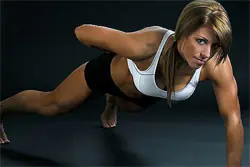Before moving on to the content description sports training methods, it is necessary to dwell on their interpretation in the special methodological literature. Perhaps, in no other issue of sports theory is there such inconsistency as in the presentation of methods of sports training.
So, some leading sports training experts consider separately ways to improve sports equipment and methods of increasing physical qualities. Naturally, such an approach is unlawful from the standpoint of modern ideas about integral and conjugate improvement of the basic motor skill and the motor qualities necessary for its effective implementation. Regarding exercise methods, the following are often highlighted:
- repeated,
- variable,
- uniform,
- interval,
- to failure,
- tempo,
- with maximum intensity,
- circular,
- with acceleration,
- game,
- competitive.
It should be noted that, firstly, in such a “set” of exercise methods, the logical connection of the signs underlying the classification (load - rest) is broken; secondly, methods such as “tempo”, “with maximum intensity” and “ to failure" are derived from methods such as "interval", "repetitive" and so on, and, thirdly, it is impossible to elevate the method of organizing exercises (for example, the "circular" method) to the rank of a method, since exercises in this way can be performed repeatedly, intervalically and continuously.
There is no need to dwell here on the numerous and varied points of view on the interpretation of sports training methods. When talking about training methods in sports, we usually distinguish between strictly regulated exercise methods, “competitive” and “game” methods.
But the term “method of strictly regulated exercise” hardly reflects the actual state of affairs, since it is impossible to achieve strict regulation in the full sense of the word when performing sports exercises, and there is no need for this. This method in its “pure” form can be attributed to test tests (ergometry, functional tests, etc.), but not to performing a sports, training exercise, where there are extremely many variables (tempo, rhythm, degree of effort, etc. .) It is also necessary to distinguish between methods associated with learning movements (analytical, synthetic) with methods used for the purpose of holistic and synchronous improvement of motor skills and physical qualities necessary for their successful implementation during the training period itself.
- Continuous exercise method characterized by performing work of varying intensity without a rest interval between individual loads. As is known, such work can be performed for a certain time depending on its power zones. Naturally, as the power of the work increases, the duration of its execution will decrease.
- Method of repeating the exercise involves its repeated repetition with arbitrary rest intervals between each work. In this case, the nature of the load can be either relatively stable or variable, which depends on the motor mode of work and the tasks facing a specific training task.
- Interval method of performing the exercise It basically assumes relatively stable “working” loads and rest intervals between them. However, the stability of both takes place, as a rule, in one or several classes. In principle, the meaning of the interval method is to gradually progress the magnitude of the loads and reduce the duration of rest intervals. The method provides for a gradual increase in requirements in order to increase adaptive properties to ever-increasing loads. The interval training method has become especially widespread in distance sports, where it is implemented in a classical form. At the same time, the very principle of intervals is increasingly used in other sports (hockey, basketball, volleyball, boxing, etc.)
Thus, sports training methods mainly based on alternation of work and rest.
Post Views: 107


